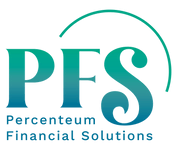Turn Your Cash Flow Into Business Growth: Five Smart Strategies for Success
Sharyn Smith • September 1, 2025
Manage Cash Flow. Maximize Growth.

Cash flow—it’s the lifeblood of your business. Even profitable companies can stumble if their cash isn’t managed well. Successful businesses know that solid cash flow management means the difference between rapid growth and unexpected setbacks. So, how do the most successful businesses keep their cash moving smoothly, month after month? In this guide, we’ll outline five actionable strategies every business owner can use for lasting financial strength and resilience.
1. Forecast Your Cash Flow
The first step to successful cash flow management is to forecast your cash inflows and outflows. This means looking at your past data—sales, investments, recurring expenses, payroll, taxes, and occasional, one-off costs that impact your bottom line.
Why forecast?
Cash flow forecasting provides a clear picture of upcoming account balances, helping you identify potential gaps before they become a problem. By anticipating when money will be coming in or going out, you keep your business on track, even in uncertain times.
Begin by reviewing historical trends and market changes that might affect your business. Regular forecasting (monthly, quarterly, or for special projects) will help you prepare for slower seasons and times when more cash is needed. For example, seasonal businesses can plan in advance to stock up or scale down. If you see a potential cash shortfall approaching, you have time to arrange a line of credit, reduce expenses, or speed up collections.
Effective cash flow forecasting means using accounting software, cash flow templates, or working with your financial advisor. The key is to keep your forecast realistic—it should reflect honest expectations rather than hopeful guesses.
2. Audit Your Cash Flow Regularly
Creating a forecast is important, but it’s only helpful if you compare it to reality. That’s why regularly auditing your cash flow is vital. Make it a habit to conduct cash flow checks every week, month, or quarter, depending on your business size and needs.
What does an audit involve?
• Compare your actual cash flow to forecasts
• Review all cash sources: sales, investments, loans, and other income
• Examine all outflows: expenses, debt payments, payroll, taxes
Through regular audits, you can catch discrepancies—like unexpected expenses or sudden drops in sales—before they become serious threats. For example, you might find an expense category steadily increasing, or an unpaid invoice that slipped through the cracks.
Consistent auditing gives you a bird’s-eye view of your business health and allows you to respond quickly to any red flags. Use simple digital tools or apps, or create a checklist to keep this process organized and repeatable. The more frequently you audit, the more control you’ll have and the more flexible you can be.
3. Automate Your Bill Payments
Paying bills manually might seem insignificant, but it can lead to late fees, missed payments, and unhappy vendors if deadlines are overlooked. Automation is a simple but powerful way to eliminate those risks and save valuable time.
Advantages of bill payment automation:
• Eliminates late fees: Set up recurring payments for rent, utilities, subscriptions, or loan payments so nothing is forgotten.
• Reduces manual errors: Human mistakes can be expensive. Automation ensures the right amounts are paid to the right parties, on time, every time.
• Saves time: Spend less time managing paperwork and more time focusing on your business priorities.
• Improves vendor relationships: Consistent, on-time payments create goodwill and can lead to better deals or terms.
Most banks and accounting software offer bill payment automation. Review your accounts monthly to verify everything is accurate, and update payment details as needed. This simple switch streamlines your operations and keeps your finances running reliably.
4. Negotiate Favorable Payment Terms
Just as businesses must pay their bills on time, they also have the right—and responsibility—to negotiate payment terms with vendors, suppliers, and partners. Why pay on a net-15 basis if net-45 or net-60 is an option? Stretching your payment window can help you retain more cash for longer, improving overall flexibility.
Negotiation tactics for payment terms:
• Ask for extensions: See if you can move from net-30 to net-45 or net-60. This gives you longer to make payments and cushions cash flow.
• Request early-payment discounts: Some vendors offer a percentage off your bill if you pay ahead of schedule.
• Bundle or batch purchases: Larger orders or consistent business may earn you better terms.
• Create win-win partnerships: Frame negotiations as working together on solutions. If your cash flow strengthens, you’re likely to be a more reliable, long-term customer.
Maintain open, professional communications—and don’t wait until you’re in a cash crunch to start these conversations. Build strong relationships with your suppliers in advance.
5. Accelerate Your Invoice Collections
Getting paid quickly is just as important as careful spending. Outstanding invoices represent money that could otherwise be invested, saved, or used to pay operational expenses. Streamlining your accounts receivable process ensures cash flows in faster.
How to speed up collections:
• Send invoices promptly: Bill your customers as soon as work is completed or goods are delivered.
• Use digital invoicing tools: These can automate reminders, track status, and allow online payments for added convenience.
• Set clear payment terms: State due dates and preferred payment methods on every invoice.
• Follow up proactively: Don’t wait weeks to check in—send reminders a few days before and after the due date.
• Offer incentives: Consider small discounts for early payment or flexible plans for repeat customers.
In some cases, it may help to request deposits on large projects, or to break payments into milestones for ongoing work. The easier you make it for clients to pay—using credit card options, ACH transfers, or online portals—the less friction there will be.
Putting It All Together: Mastering Cash Flow Management
Managing cash flow is more than a back-office chore; it directly influences your business’s ability to seize new opportunities, weather uncertainty, and grow sustainably. When you know where your money is coming from, where it’s going, and how to optimize each step, you’ll sleep easier—and operate with confidence.
Master these five strategies:
• Forecast cash flow
• Audit regularly
• Automate bill payments
• Negotiate payment terms
• Accelerate collections
These practices help you stay proactive, agile, and ready for whatever comes next.
Feeling Overwhelmed? We’re Here to Help.
If managing cash flow still feels overwhelming, you’re not alone. Many business owners feel stretched just keeping up with daily demands, let alone diving into financial management. But you don’t have to do it yourself. Reach out today for expert help tailored to your business. Our team brings tools, experience, and personal guidance to help you keep your cash flowing and your growth on track.
Contact us today for customized advice and a roadmap to financial clarity.
info@percenteum.com
469-476-4578
Manage Cash flow. Maximize Growth.
